Science fiction, as a genre, has held readers spellbound for years with its fantastical realms brimming with breathtaking landscapes, stimulating notions, and mesmerizing characters. It encompasses everything from colonies in far-off planets to dystopian societies in a future that’s not too far away. Science fiction provides us with a peek into the potential of the future.
In this blog, we’ll be taking a look at 25 Best Science Fiction Books of all time. From classic works by H.G. Wells and Isaac Asimov, to modern bestsellers like “The Hunger Games” and “The Martian,” these books have stood the test of time and continue to be loved by readers of all ages.
Whether you’re a long-time science fiction fan or new to the genre, these books are sure to transport you to new and exciting worlds beyond our own. So, buckle up and prepare to embark on a journey through space and time!
Here are 25 Best Science Fiction Books of all time
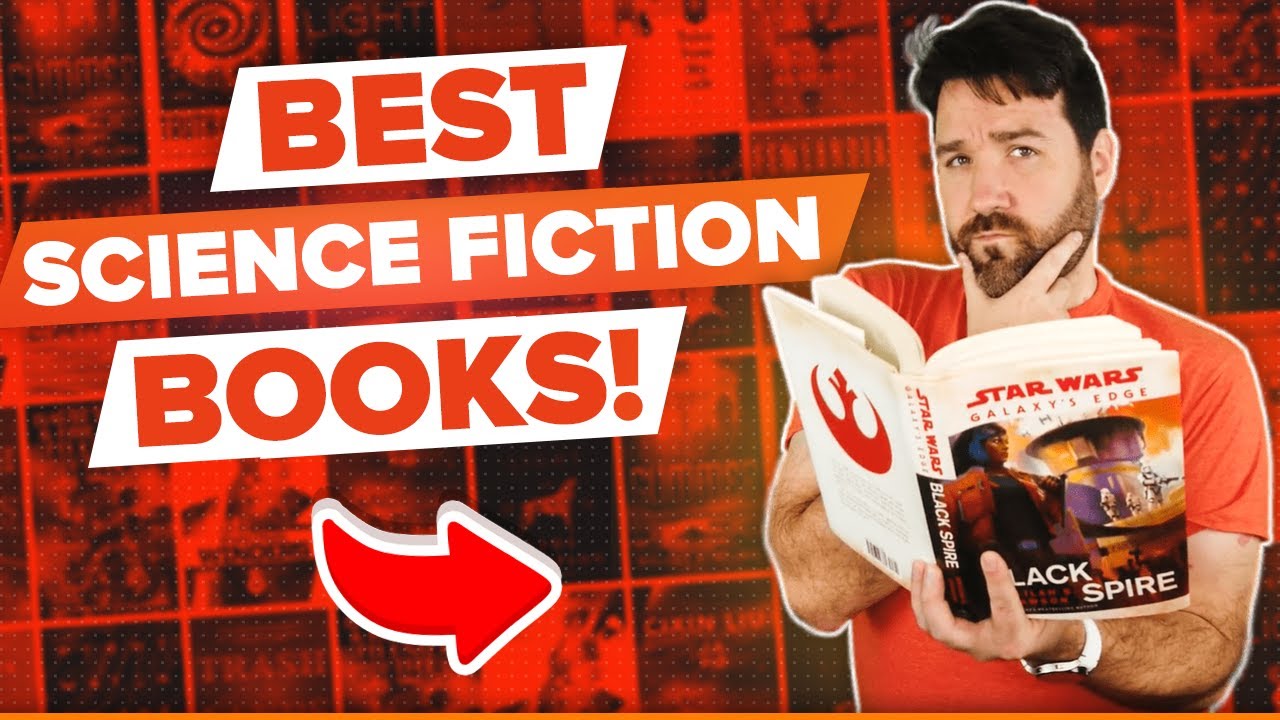
"Ready Player One" by Ernest Cline
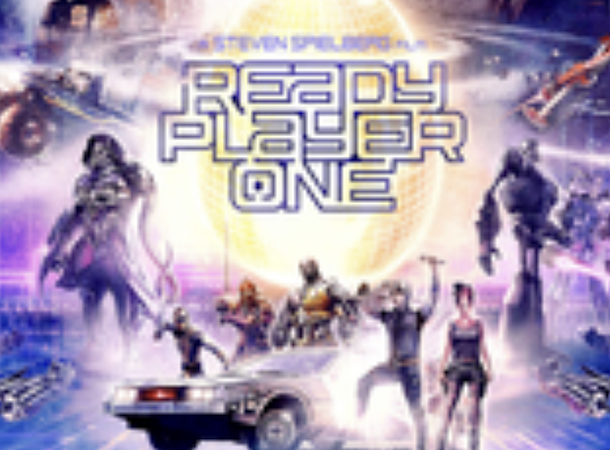 https://en.wikipedia.org/wiki/Ready_Player_One_%28film%29#/media/File:Ready_Player_One_(film).png
https://en.wikipedia.org/wiki/Ready_Player_One_%28film%29#/media/File:Ready_Player_One_(film).png “Ready Player One” is a science fiction novel written by Ernest Cline, published in 2011. The novel is set in a dystopian future where the world is on the brink of collapse and people find escape in a virtual reality world called the OASIS. The story follows Wade Watts, an orphan who is obsessed with the OASIS and the hunt for an Easter egg hidden within it by its creator, James Halliday. The egg is said to give the finder Halliday’s fortune and control of the OASIS.
"Annihilation" by Jeff Vandermeer
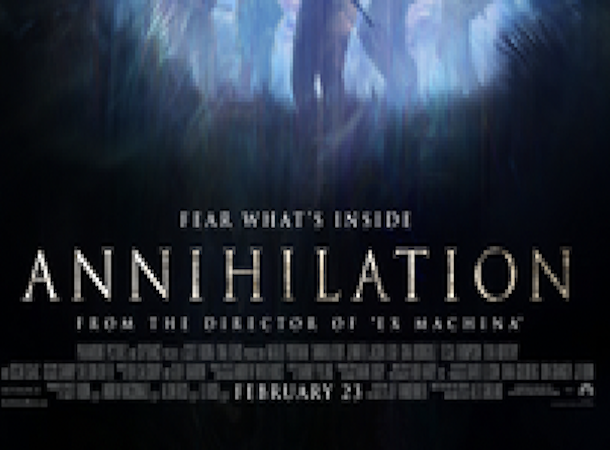 https://en.wikipedia.org/wiki/Annihilation_%28film%29
https://en.wikipedia.org/wiki/Annihilation_%28film%29 “Annihilation” is a science fiction novel written by Jeff Vandermeer, published in 2014. The novel is the first in the “Southern Reach Trilogy” and it is set in a mysterious and deadly area known as “Area X” which is surrounded by an invisible barrier, and it has been cut off from the rest of the world for decades. The story follows a team of scientists, the twelfth expedition, who enter into the area to study and understand its strange phenomena, but soon they discover that the area is not what it seems and their expedition turns into a journey of self-discovery and survival.
"Altered Carbon" by Richard K. Morgan
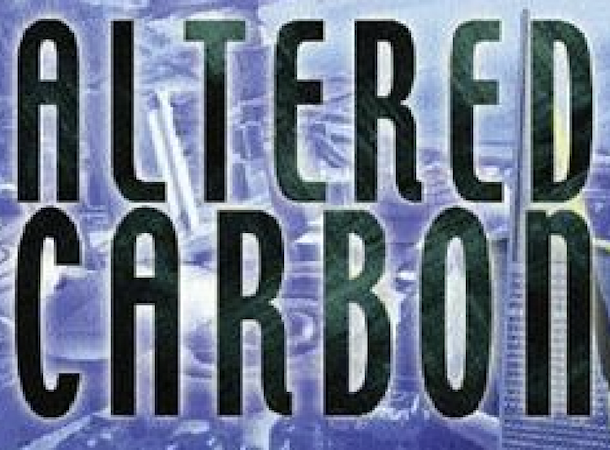 https://en.wikipedia.org/wiki/Altered_Carbon#/media/File:Altered_Carbon_cover_1_(Amazon).jpg
https://en.wikipedia.org/wiki/Altered_Carbon#/media/File:Altered_Carbon_cover_1_(Amazon).jpg “Altered Carbon” is a science fiction novel written by Richard K. Morgan, published in 2002. The novel is set in a future where human consciousness can be transferred into new bodies, known as “sleeves,” allowing people to essentially live forever. The story follows the character of Takeshi Kovacs, a former soldier and criminal, who is brought back to life in a new sleeve to solve a murder case. The novel explores themes of death, identity, and the consequences of immortality.
"The Windup Girl" by Paolo Bacigalupi
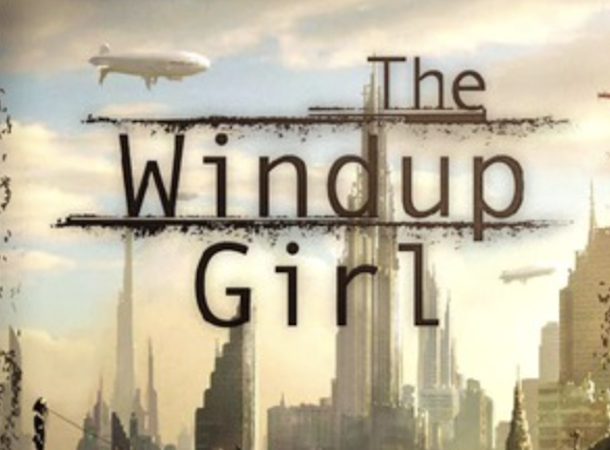 https://en.wikipedia.org/wiki/The_Windup_Girl
https://en.wikipedia.org/wiki/The_Windup_Girl “The Windup Girl” is a science fiction novel written by Paolo Bacigalupi, published in 2009. The novel is set in a near-future, post-oil, world where a new form of bio-engineered organisms called “calorie men” are used as a source of energy. The story follows the struggles of a variety of characters in a decaying Bangkok, as they navigate the complex political and economic landscape of a world where corporations have become more powerful than governments.
"The Long Earth" by Terry Pratchett and Stephen Baxter
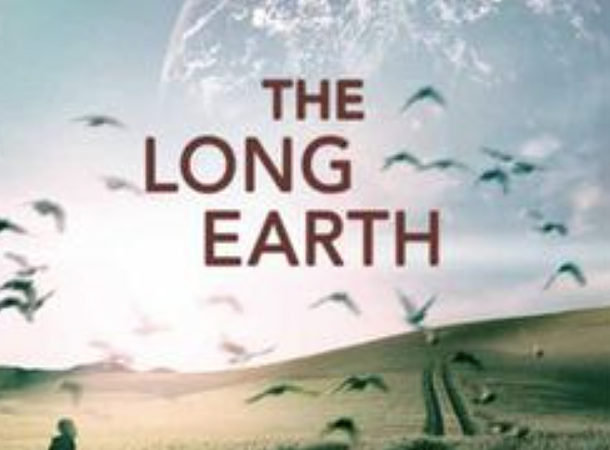 https://en.wikipedia.org/wiki/The_Long_Earth#/media/File:The_Long_Earth_UK_Book_Cover.jpg
https://en.wikipedia.org/wiki/The_Long_Earth#/media/File:The_Long_Earth_UK_Book_Cover.jpg “The Long Earth” is a science fiction novel written by Terry Pratchett and Stephen Baxter, published in 2012. The novel is set in a universe of parallel earths, which can be reached through the use of a simple device called a “Stepper. The story follows the journey of Joshua Valienté, who is one of the first to discover the existence of the parallel earths, and the Reverend Doctor Richard Mayflower, a natural philosopher, who together embark on a journey to explore the vast expanse of the “Long Earths”.
"The Diamond Age" by Neal Stephenson
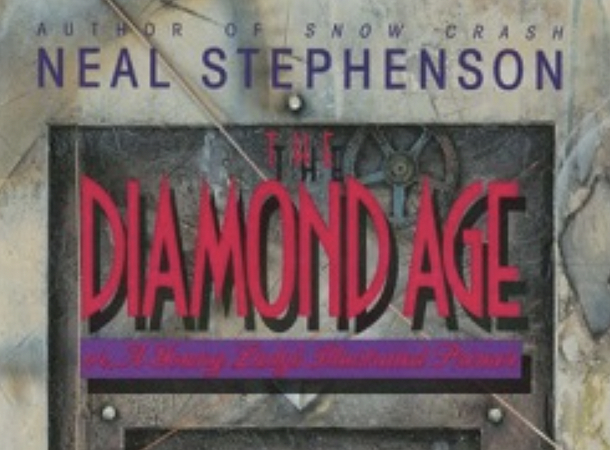 https://en.wikipedia.org/wiki/The_Diamond_Age#/media/File:The_Diamond_Age.jpg
https://en.wikipedia.org/wiki/The_Diamond_Age#/media/File:The_Diamond_Age.jpg “The Diamond Age” is a science fiction novel written by Neal Stephenson, published in 1995. The novel is set in a future world where nanotechnology has become the dominant technology, and society is divided into several loosely-linked cultures and factions. The story follows the life of a young girl named Nell, who comes into possession of a highly advanced interactive book called “The Young Lady’s Illustrated Primer” that was intended for a wealthy girl of the same age.
"The Three-Body Problem" by Liu Cixin
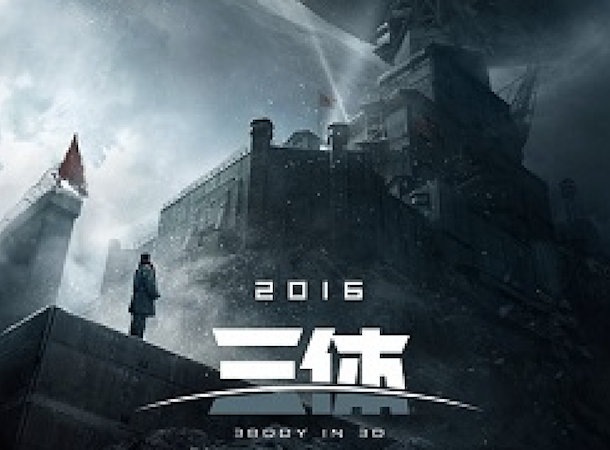 https://en.wikipedia.org/wiki/The_Three-Body_Problem_%28film%29
https://en.wikipedia.org/wiki/The_Three-Body_Problem_%28film%29 “The Three-Body Problem” is a science fiction novel written by Liu Cixin, published in 2008. The novel tells the story of the first contact between humanity and an alien civilization and the consequences that follow. The story takes place in the middle of the 21st century, when the Chinese government receives a series of strange transmissions from an alien civilization.
"The City and the City" by China Miéville
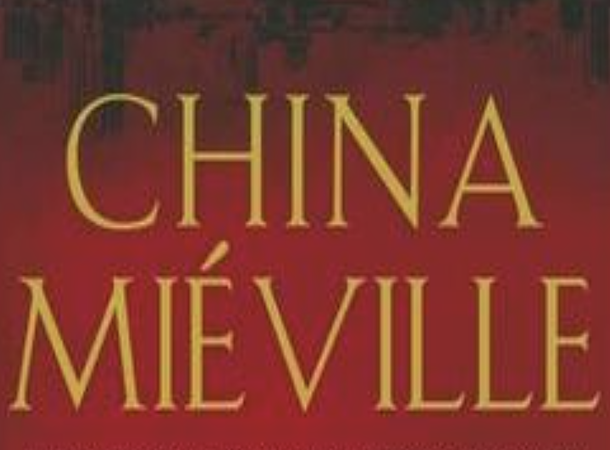 https://en.wikipedia.org/wiki/The_City_%26_the_City#/media/File:Mieville_City_2009_UK.jpg
https://en.wikipedia.org/wiki/The_City_%26_the_City#/media/File:Mieville_City_2009_UK.jpg “The City and the City” is a science fiction novel written by China Miéville, published in 2009. The novel is set in two cities, Beszel and Ul Qoma, that exist in the same physical space but are separate, distinct entities, separated by something called “breach” which is a powerful cultural force that enforces the separation of the two cities and the two communities. The story follows the murder investigation of a young woman in Beszel by Inspector Tyador Borlú of the Extreme Crime Squad.
"The Dispossessed" by Ursula K. Le Guin
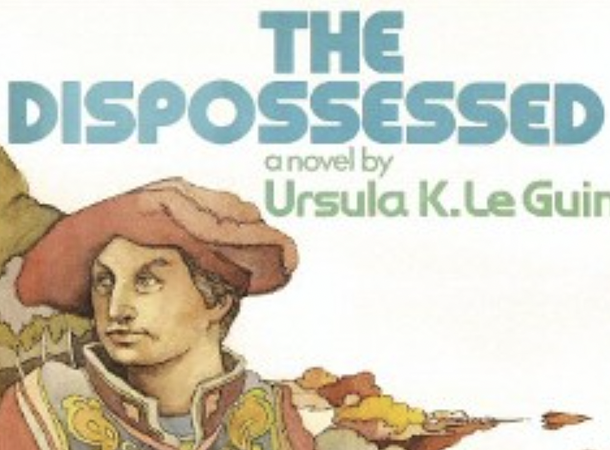 https://en.wikipedia.org/wiki/The_Dispossessed#/media/File:TheDispossed(1stEdHardcover).jpg
https://en.wikipedia.org/wiki/The_Dispossessed#/media/File:TheDispossed(1stEdHardcover).jpg “The Dispossessed” is a science fiction novel written by Ursula K. Le Guin, published in 1974. The novel tells the story of an anarchist society on a distant planet, called Annares, and its relationship with the neighboring capitalist society, Urras. The novel follows the story of a physicist, Shevek, from Annares, who visits Urras in order to share his scientific discoveries, but ends up getting caught up in the political and social conflicts between the two planets.
"The Cyberiad" by Stanislaw Lem
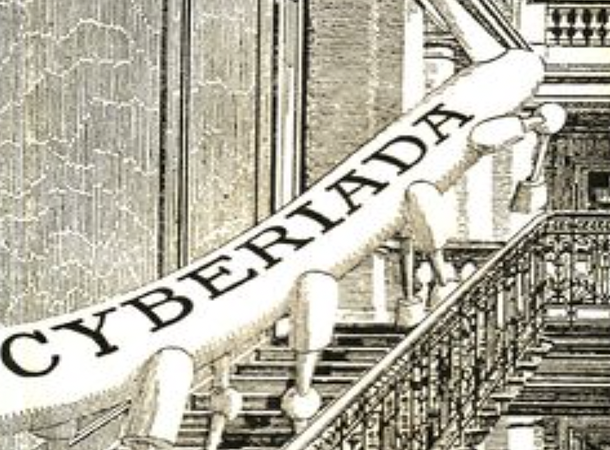 https://en.wikipedia.org/wiki/The_Cyberiad#/media/File:TheCyberiad.jpg
https://en.wikipedia.org/wiki/The_Cyberiad#/media/File:TheCyberiad.jpg “The Cyberiad” is a collection of science fiction stories written by Stanislaw Lem, first published in 1965. The stories follow the adventures of the constructor robots Trurl and Klapaucius, as they use their knowledge and abilities to solve problems for various kings and emperors. The stories are known for their humorous and satirical tone, as well as their commentary on the nature of technology, artificial intelligence, and the human condition.
"The Left Hand of Darkness" by Ursula K. Le Guin
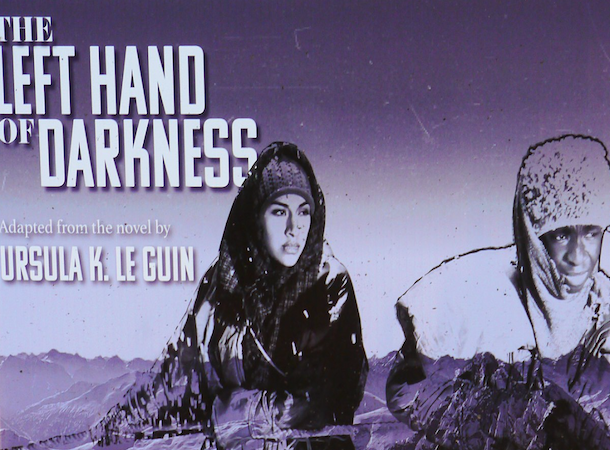 https://simple.wikipedia.org/wiki/The_Left_Hand_of_Darkness#/media/File:Sign_for_The_Left_Hand_of_Darkness_Play_(38588084501).jpg
https://simple.wikipedia.org/wiki/The_Left_Hand_of_Darkness#/media/File:Sign_for_The_Left_Hand_of_Darkness_Play_(38588084501).jpg “The Left Hand of Darkness” is a science fiction novel written by Ursula K. Le Guin in 1969. The novel tells the story of a human envoy, Genly Ai, sent to the planet of Winter (also known as Gethen), to persuade its inhabitants to join an intergalactic federation of planets. Winter is unique because its inhabitants are ambisexual, meaning they have no fixed gender and can switch between male and female depending on the circumstances.
"The Road" by Cormac McCarthy
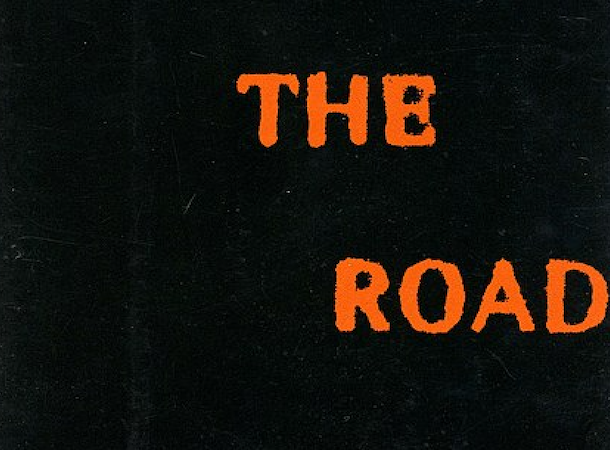 https://en.wikipedia.org/wiki/The_Road
https://en.wikipedia.org/wiki/The_Road “The Road” is a post-apocalyptic novel written by Cormac McCarthy in 2006. The novel tells the story of a father and his young son as they travel through a landscape of ash and ruin, following an unspecified cataclysm that has destroyed most of civilization. The novel explores themes of hope, morality, and the bonds of love in the face of total devastation. The father and son’s journey is a harsh one, as they face starvation, cold, and constant danger from cannibalistic gangs.
"Do Androids Dream of Electric Sheep?" by Philip K. Dick
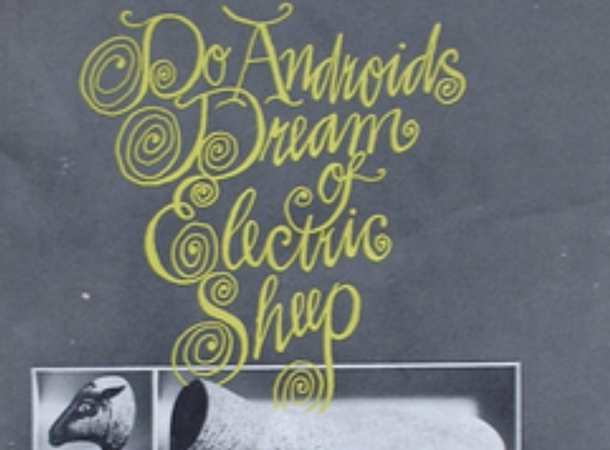 https://upload.wikimedia.org/wikipedia/en/e/ee/DoAndroidsDream.png
https://upload.wikimedia.org/wikipedia/en/e/ee/DoAndroidsDream.png “Do Androids Dream of Electric Sheep?” is a science fiction novel written by Philip K. Dick in 1968. The story is set in a post-apocalyptic future in which most animal species have gone extinct and humanity has begun to colonize other planets. The novel follows the story of Rick Deckard, a bounty hunter who is tasked with hunting down rogue androids (or “replicants”) who have escaped from off-world colonies. As he tracks down the androids, Deckard begins to question the nature of humanity and the morality of his actions.
"The Brave New World" by Aldous Huxley
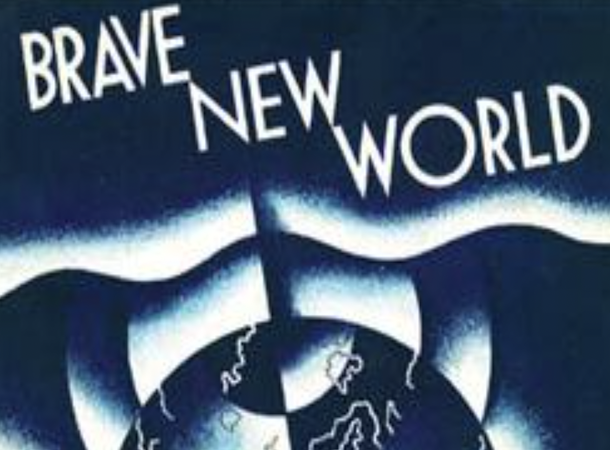 https://upload.wikimedia.org/wikipedia/en/6/62/BraveNewWorld_FirstEdition.jpg
https://upload.wikimedia.org/wikipedia/en/6/62/BraveNewWorld_FirstEdition.jpg “Brave New World” is a dystopian novel written by Aldous Huxley in 1932. The story takes place in a futuristic society known as the World State, where people are genetically engineered and conditioned to conform to a highly-ordered and controlled way of life. The novel explores the themes of individuality, freedom, and the consequences of advanced technology and scientific control on society.
"The Time Machine" by H.G. Wells
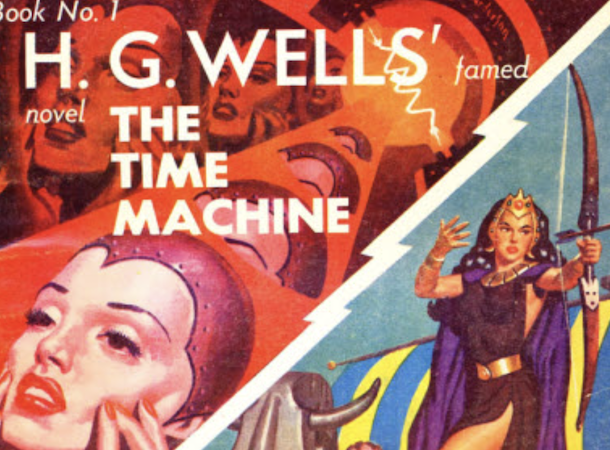 https://en.wikipedia.org/wiki/The_Time_Machine#/media/File:Two_complete_science_adventure_books_1951win_n4.jpg
https://en.wikipedia.org/wiki/The_Time_Machine#/media/File:Two_complete_science_adventure_books_1951win_n4.jpg “The Time Machine” is a science fiction novel written by H.G. Wells in 1895. The story follows a scientist and inventor, known simply as “The Time Traveler,” as he builds a machine that allows him to travel through time. He uses the machine to visit the distant future, where he discovers a world divided between the peaceful Eloi and the savage Morlocks. As he becomes embroiled in the politics of this future world, the Time Traveler must race against time to return to his own time before the machine is lost forever.
Ender's Game" by Orson Scott Card
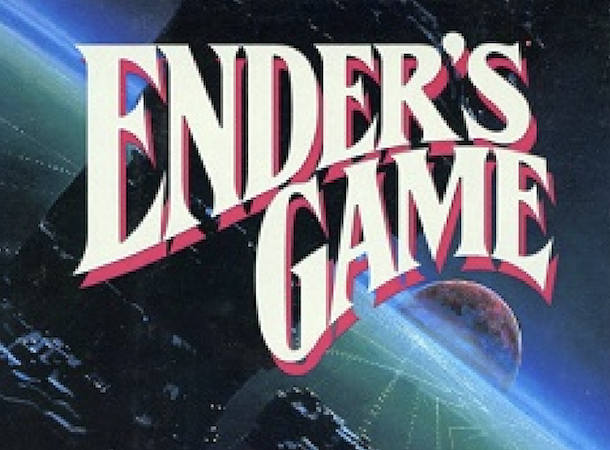 https://en.wikipedia.org/wiki/Ender%27s_Game
https://en.wikipedia.org/wiki/Ender%27s_Game “Ender’s Game” is a science fiction novel written by Orson Scott Card and published in 1985. The story is set in the future, in a time of war between humanity and an alien race known as the Formics. The novel follows Ender Wiggin, a young boy who is recruited by the military to attend Battle School, a training facility for child soldiers. Ender excels at the intense training and strategy games, quickly rising through the ranks, but as he becomes more successful, the lines between the games and reality become blurred, and he begins to question the morality of the war and his role in it.
"The Hunger Games" by Suzanne Collins
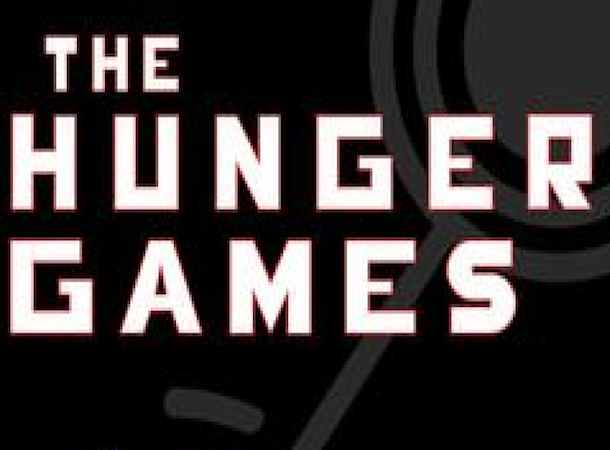 https://en.wikipedia.org/wiki/The_Hunger_Games_%28novel%29
https://en.wikipedia.org/wiki/The_Hunger_Games_%28novel%29 “The Hunger Games” is a dystopian novel written by Suzanne Collins and published in 2008. The story takes place in the nation of Panem, a post-apocalyptic country that consists of a wealthy Capitol and 12 impoverished districts. As punishment for a past rebellion, the Capitol requires each district to send one boy and one girl between the ages of 12 and 18 to participate in the annual “Hunger Games,” a fight to the death on live television. The story follows Katniss Everdeen, a 16-year-old girl from District 12 who volunteers to take her sister’s place in the games and her journey through the competition.
"The Martian" by Andy Weir
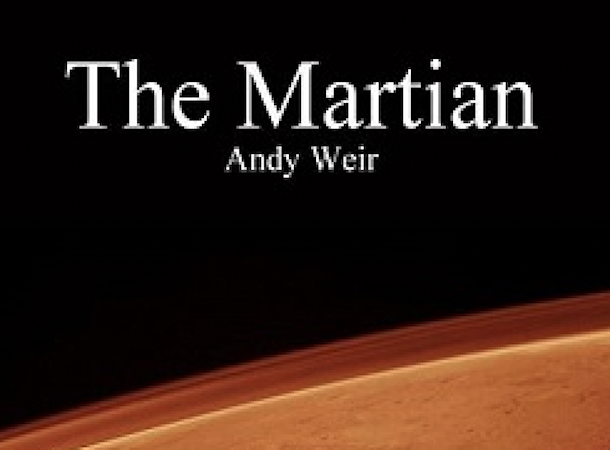 https://en.wikipedia.org/wiki/The_Martian_%28Weir_novel%29
https://en.wikipedia.org/wiki/The_Martian_%28Weir_novel%29 “The Martian” is a science fiction novel written by Andy Weir and published in 2011. The story is set in the near future and follows the struggles of an astronaut, Mark Watney, who is stranded alone on Mars after his crew leaves him behind during a fierce storm. The novel follows Watney’s efforts to survive on the harsh Martian environment and to find a way to communicate with Earth and get rescued.
"The Handmaid's Tale" by Margaret Atwood
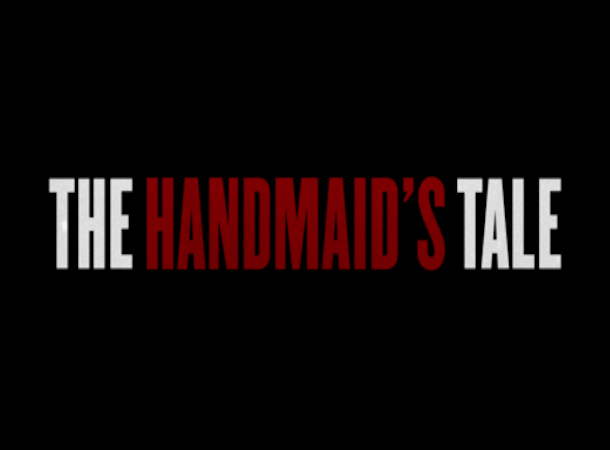 https://en.wikipedia.org/wiki/The_Handmaid%27s_Tale_%28TV_series%29
https://en.wikipedia.org/wiki/The_Handmaid%27s_Tale_%28TV_series%29 “The Handmaid’s Tale” is a dystopian novel written by Margaret Atwood and published in 1985. The story is set in the near future in the Republic of Gilead, a theocratic, totalitarian regime that has taken over the United States after a period of political and social upheaval. The novel follows the story of Offred, a handmaid, whose role is to bear children for the regime’s elite couples who are unable to conceive. The novel explores themes such as oppression, gender, power, and religion, as well as the consequences of a society that denies individual rights, freedom, and autonomy.
The War of the Worlds" by H.G. Wells
 https://en.wikipedia.org/wiki/The_War_of_the_Worlds
https://en.wikipedia.org/wiki/The_War_of_the_Worlds The War of the Worlds” is a science fiction novel written by H.G. Wells and first published in 1898. The story is set in Victorian England and tells of an invasion of Earth by Martians, who arrive in cylinder-shaped spacecraft and launch a devastating attack on the inhabitants of the planet. The novel follows the narrator, an unnamed man living in the London area, as he witnesses the destruction caused by the Martians and struggles to survive the invasion.
"Snow Crash" by Neal Stephenson
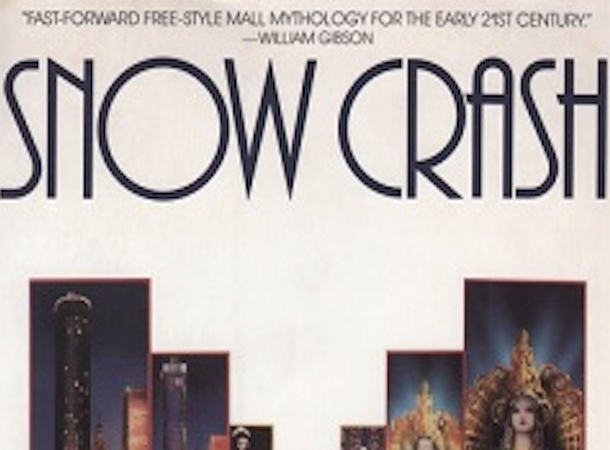 https://en.wikipedia.org/wiki/Snow_Crash#/media/File:Snowcrash.jpg
https://en.wikipedia.org/wiki/Snow_Crash#/media/File:Snowcrash.jpg “Snow Crash” is a science fiction novel written by Neal Stephenson and published in 1992. The story is set in a dystopian future where America is a divided nation, with many private corporations running cities, and the economy is based on information and virtual reality. The protagonist is a hacker and pizza delivery man named Hiro Protagonist, who becomes embroiled in a conflict between ancient Sumerian gods and a new drug called Snow Crash, which infects the minds of its users through a virtual reality interface.
"Foundation" by Isaac Asimov
 https://upload.wikimedia.org/wikipedia/en/e/eb/Foundation_and_Earth_%28book_cover%29.jpg
https://upload.wikimedia.org/wikipedia/en/e/eb/Foundation_and_Earth_%28book_cover%29.jpg “Foundation” is a science fiction novel written by Isaac Asimov and published in 1951. It is the first book in the Foundation series, which consists of seven books and multiple short stories. The story is set in a distant future where humanity has colonized the galaxy and formed a vast empire. The novel follows a mathematician, Hari Seldon, who develops a new science of psychohistory that can predict the future of humanity with a high degree of accuracy.
"Neuromancer" by William Gibson
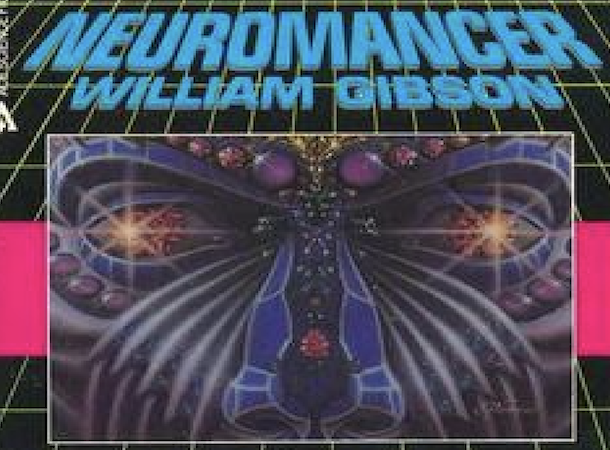 https://en.wikipedia.org/wiki/Neuromancer#/media/File:Neuromancer_(Book).jpg
https://en.wikipedia.org/wiki/Neuromancer#/media/File:Neuromancer_(Book).jpg “Neuromancer” is a science fiction novel written by William Gibson and published in 1984. It is widely considered a seminal work of the cyberpunk genre and is credited with popularizing many of the genre’s characteristic themes, including the Internet, artificial intelligence, and virtual reality. The story is set in a dystopian future where the world is controlled by powerful corporations and the protagonist, Case, a washed-up hacker, is hired by a mysterious figure known as the Wintermute to pull off the ultimate hack.
"The Hitchhiker's Guide to the Galaxy" by Douglas Adams
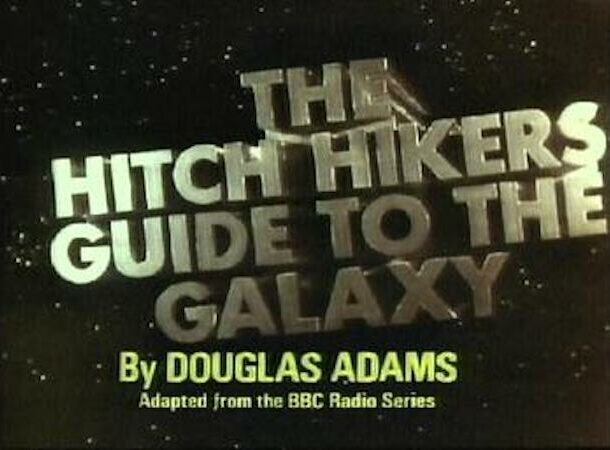 https://en.wikipedia.org/wiki/The_Hitchhiker%27s_Guide_to_the_Galaxy_%28TV_series%29
https://en.wikipedia.org/wiki/The_Hitchhiker%27s_Guide_to_the_Galaxy_%28TV_series%29 “The Hitchhiker’s Guide to the Galaxy” is a comedic science fiction series written by Douglas Adams. It began as a radio drama before being adapted into a series of novels, television series, stage productions, and feature films. The story follows the misadventures of an unwitting human named Arthur Dent, who is rescued from Earth’s destruction by Ford Prefect, a friend and researcher for the eponymous guidebook, and then travels through space with Ford and other eccentric characters.
"Dune" by Frank Herbert
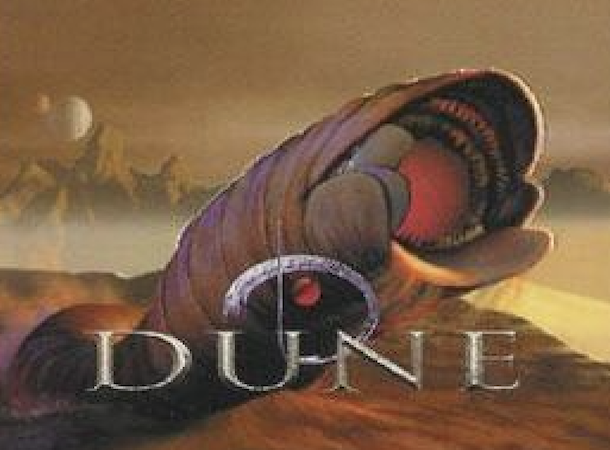 https://en.wikipedia.org/wiki/The_Hitchhiker%27s_Guide_to_the_Galaxy_%28TV_series%29
https://en.wikipedia.org/wiki/The_Hitchhiker%27s_Guide_to_the_Galaxy_%28TV_series%29 “Dune” is a classic science fiction novel written by Frank Herbert and published in 1965. It is set in the distant future and tells the story of a desert planet called Arrakis, also known as Dune, which is the only known source of the valuable substance called “spice. The novel is notable for its complex world-building, rich characterization, and themes of politics, religion, and environmentalism.



























